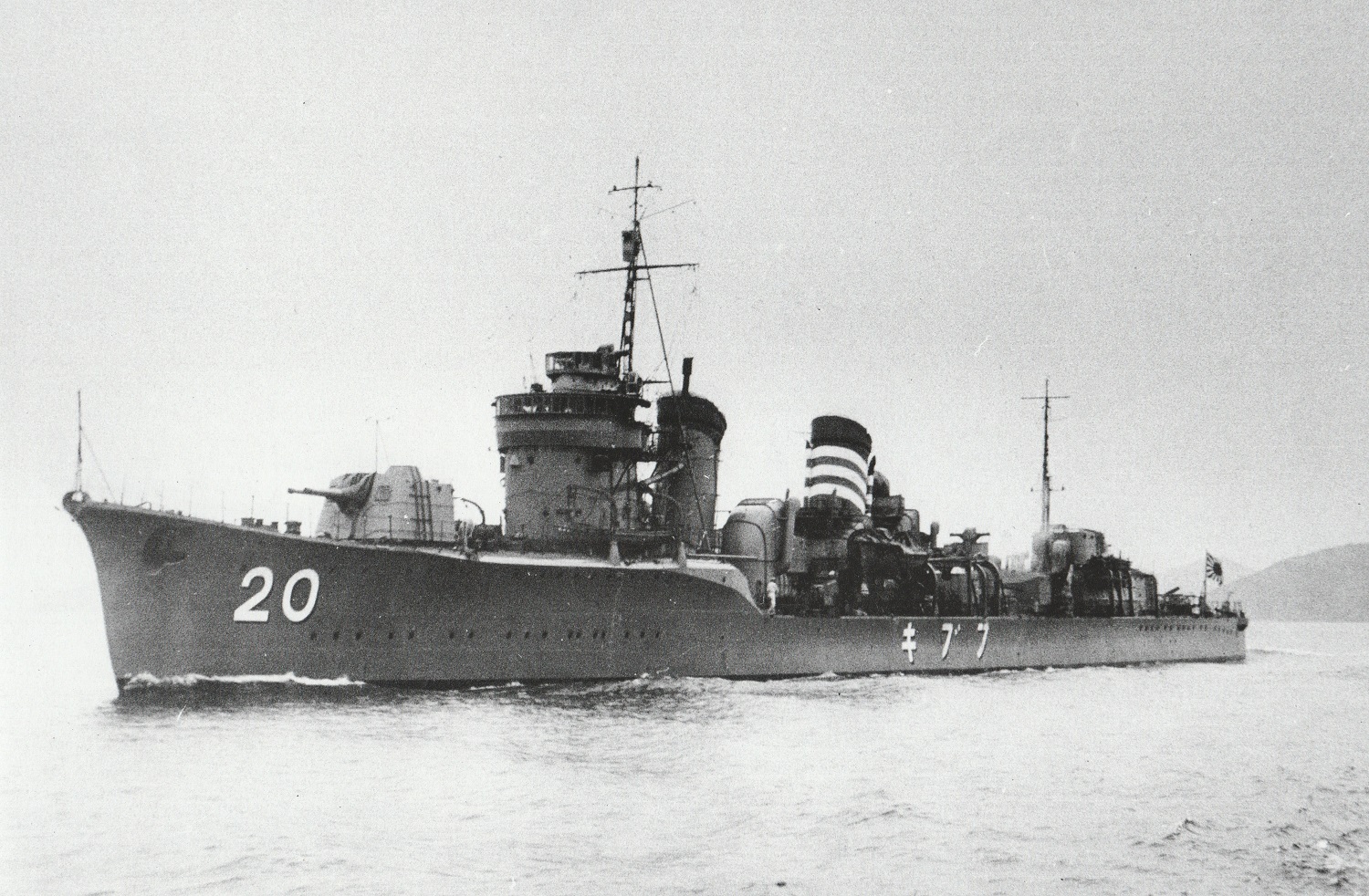
These weapons were used on most Japanese destroyers built between 1926 and 1945 in both single and twin mounts. The mountings for these guns were to a revolutionary design, as the Japanese were the first to use weather and splinter-proof mounts on destroyers. The second batch of these destroyers were also the first to use medium caliber guns with high elevations, giving them a DP function. However, the very slow training speeds, hand ramming and lack of AA fire control made these mountings almost useless against the fast-moving aircraft of World War II.
These weapons were of built-up construction, originally three layers (Model No. I) and later two layers (Model No. I2) along with the usual breech ring and breech bush. About 700 guns were manufactured. Surprisingly for this size weapon, these guns fired bag ammunition and used a Welin breech block with a three-motion breech mechanism rather than a faster-acting cartridge gun with a sliding wedge-type breech mechanism.
| Designation | 12.7 cm/50 (5") 3rd Year Type (Model 1914)
Official Designation: 50 caliber 3rd Year Type 12.7 cm Gun |
|---|---|
| Ship Class Used On | Destroyers
Fubuki 1, Ayanami, Akatsuki, Hatsuharu, Shiratsuyu, Asashio, Kagerô, Yûgumo and Shimakaze Classes Torpedo Boats
|
| Date Of Design | 1926 |
| Date In Service | 1928 |
| Gun Weight | 4.18 tons (4,245 kg) |
| Gun Length oa | 255.2 in (6.483 m) |
| Bore Length | 250 in (6.350 m) |
| Rifling Length | 211 in (5.351 m) |
| Grooves | (36) 0.060 in deep x 0.261 in (1.52 mm x 6.63 mm) |
| Lands | 0.175 in (4.45 mm) |
| Twist | Uniform RH 1 in 28 |
| Chamber Volume | 976 in3 (16 dm3) |
| Rate Of Fire 3 | Type A twin mount: 5 rounds per minute
Other twin mounts and single mounts: 5 to 10 rounds per minute |
- ^The twenty-four "Special Type" destroyers are usually split into the Fubuki (first 10), the Ayanami (second 10) and the Akatsuki (last 4) sub-groups. The Akatsuki sub-group is normally listed as a separate class as they had substantial differences from the earlier ships. Regarding weaponry, the difference between these sub-groups was that the Fubuki sub-group had the SP Type A twin mountings, while the Ayanami and the Akatsuki sub-groups had the DP Type B twin mountings.
- ^The Chidori class torpedo boats were originally completed with three 12.7 cm (5") guns (1 x 1 and 1 x 2). Tomodzuru of this class capsized in a gale on 13 March 1934. The investigation into this incident found that she had excessive topweight and was unstable even in moderate weather. She and her sisters were extensively modified to improve stability and their 12.7 cm (5") guns were replaced with three single 12 cm/45 (4.7") 11th Year Type guns.
- ^A Note on Sources: The Warship 2007 essay "The Japanese Destroyers of the Hatsuharu Class" and the 2022 book "Fubuki-Class Destroyers" both by Hans Lengerer say that the firing rate was about 4.4 - 5.0 rounds per minute per gun, which is rather slow for a medium-caliber Welin breech gun. For example, the 14 cm/50 (5.5") 3rd Year Type, which was a SP bag gun that used the same type of breech mechanism and fired a heavier projectile, had a firing rate of 6 to 10 rounds per minute (depending upon the rate of supply). Other sources such as Kaigun hōjutsu shi (History of Naval Gunnery) quote higher figures for the 12.7 cm gun that are closer to 10 RPM. In addition, O-47(N)-1 notes that the single and twin mountings had pusher type shell hoists that could provide 14 projectiles per minute to the gunhouse. A reasonable conclusion from this rate of supply is that the Japanese, who pared the weight of these ships to the bone and beyond, would not have wasted a gram in having a supply capacity that was nearly three times as fast as needed. For this reason, I do not believe that the firing rate given by Mr. Lengerer to be correct unless it is only for the Type A twin mounting. The Type A twin mounting was not equipped with shell hoists and all ammunition transfers were by hand, which would imply that it had a low rate of fire. This assumption is further supported by O-47(N)-1 which states on page 41 that:
"These mounts were designed in 1927 as the main armament of first-class destroyers. They were designed mainly for low-angle firing and used separate ammunition. Their rate of fire was consequently low, about five rounds per gun per minute. Because of this, they were not very popular and were soon replaced (emphasis added)."
The "were soon replaced" comment in regards to the 1927 introduction date can only be in reference to the Type A twin mounting with its manual handling of ammunition and resulting low rate of fire. The Type B twin mounting which replaced it on new construction starting in 1928 used powered shell hoists in place of manual ammunition transfers, as did all subsequent single and twin mountings. As noted above, these hoists would have allowed the newer mountings to have a much higher rate of fire than the Type A twin mounting. As the 12.7 cm/50 3rd Year Type gun was a bag type that needed to be lowered to at least +10 degrees in order to be loaded, my conclusions are that these mountings would have had a slow 5 RPM rate of fire only when used for high-angle AA fire. When at a +10 degree or lower elevation for surface actions, their rate of fire would have been closer to 10 RPM.
| Type | Bag |
|---|---|
| Projectile Types and Weights | Common Type 0 HE: 50.7 lbs. (23.0 kg)
Common Type 1 HE 1a: 50.7 lbs. (23.0 kg) Common Type 3 IS 2a: 50.7 lbs. (23.0 kg) Common Type 4 IS: 50.7 lbs. (23.0 kg) ASW 3a: 46.2 lbs. (20.9 kg) Illum 4a: 50.7 lbs. (23.0 kg) New Type Projectile 5a: 61.6 lbs. (27.9 kg) |
| Bursting Charge | Common Type 0 HE: 4.15 lbs. (1.88 kg)
Common Type 1 HE: 4.86 lbs. (2.2 kg) ASW: 8.78 lbs. (4.0 kg) New Type Projectile: 4.84 lbs. (2.2 kg) |
| Projectile Length | Common Type 0 HE: 17.2 in (43.7 cm)
Common Type 1 HE: 17.2 in (43.7 cm) Common Type 3 IS: 17.2 in (43.7 cm) Common Type 4 IS: 17.2 in (43.7 cm) ASW: 17.2 in (43.7 cm) New Type Projectile: 21.6 in (54.9 cm) |
| Propellant Charge 6a | All except ASW: 17.0 lbs. (7.7 kg) 30 DC
ASW: N/A |
| Muzzle Velocity | Common Rounds: 3,002 fps (915 mps)
ASW: 820 fps (250 mps) Illum: 2,460 fps (750 mps) |
| Working Pressure | 18.0 tons/in2 (2,840 kg/cm2) |
| Approximate Barrel Life | 550 - 700 Rounds |
| Ammunition stowage per gun | about 150 rounds 7a |
- ^Common Type 1 HE was supplied with time fuzes for AA defense. US Naval Technical Mission to Japan report O-19 says that this round had an effective radius of 20.6 yards (19 m) but this seems to be optimistic.
- ^IS is my abbreviation for the incendiary shrapnel round (sankaidan) intended for AA use. These were officially listed as Common shells, but were actually incendiary fragmentation rounds.
- ^The flat-nosed ASW projectile was issued in 1943 following extensive testing. This is listed in US Naval Technical Mission to Japan report O-19 as being able to penetrate a 9.85 in (25 cm) plate of Ducol Steel (roughly equivalent to USN HTS) at a depth of 26 feet (8 meters). However, based upon other errors in this document, I would believe this to be an error in metric to English unit conversion and that the actual performance would more likely be 0.985 in (2.5 cm). Range for this performance is not given.
- ^Illumination rounds were rated at 680,000 candle power and had a maximum range of 17,000 yards (15,540 m).
- ^"New Type Projectile" is the description used in the US Naval Technical Mission to Japan report O-19. This projectile was under development at the end of the war and does not appear to have entered service use. This projectile was boat-tailed, more streamlined at 13crh, had a maximum surface range of 25,180 yards (23,025 m) and a maximum AA Ceiling of 49,260 feet (15,010 m) at 90 degrees elevation.
- ^The propellant charge was in one bag with a 1.75 oz (50 gm) black powder igniter.
- ^As built the "Specials" outfits were 150 rounds per gun peacetime and 180 rounds wartime. After the rebuilds following the investigation into the capsizing of the torpedo boat Tomozuru and weather-related damage to other ships in 1935, stowage was reduced to 120 rounds per gun peacetime and 150 wartime. Outfits of later ships is not available at this time.
- Fuzes were set by hand on the loading tray.
| Elevation | Range |
|---|---|
| 5 degrees | 7,910 yards (7,235 m) |
| 10 degrees | 11,140 yards (10,190 m) |
| 20 degrees | 15,385 yards (14,068 m) |
| 30 degrees | 18,235 yards (16,672 m) |
| 40 degrees | 19,980 yards (18,269 m) |
| 45 degrees | 20,100 yards (18,380 m) |
| AA Ceiling @ 75 degrees | about 40,000 feet (12,200 m) |
| Elevation | Range |
|---|---|
| 40 degrees | 4,700 yards (4,300 m) |
Minimum range of ASW shell is given as 875 yards (800 m). Ranges less than this tended to ricochet.
| Designation 1b 2b 3b | Single Mounts 4b Chidori (1), Hatsuharu 5b (1) and Shiratsuyu (class leader only) (1): Type A Ariake (1) and Yûgure (1): Type A1 6b Shiratsuyu class (except leader) (1): Type B Twin Mounts 7b |
|---|---|
| Weight 15b | Single Mounts
18.7 tons (19.0 mt) Twin Mounts
|
| Elevation 16b | Single Mounts
Type A: -7 / +75 degrees Type A1: -7 / +55 degrees Type B: -7 / +55 degrees Twin Mounts
|
| Elevation Rate | 6-12 degrees per second officially, but 24 for single mounts and 27 for twin mounts has been reported |
| Train | about +150 / -150 degrees |
| Train Rate | 4-6 degrees per second |
| Gun recoil | N/A |
| Loading Angle | +5 to +10 degrees (Hand ramming) 18b |
- ^There is some disagreement in the sources below as to what mounting Model and Mod were used on these destroyers. I have chosen to use the data in O-47(N)-1 as a guide along with data in "Mechanism of Japanese Warships - Destroyers" and "Naval Weapons of World War Two" for resolving the discrepancies.
- ^It is difficult to determine the mounting type in photographs. My personal method for the twin mounts is that the Type A has a squarish shape, the Type B series have either a rounded or a rectangular gunsight that protrudes up above the roof and has square port holes along the sides, and that the Type C and Type D have a flat roof and round port holes along the sides. See photographs and sketches below.
- ^Many surviving destroyers had their 'X' mounting removed during the war in order to fit additional 25 mm AA guns. Destroyers equipped with the Type D twin mounting with its +75 degrees maximum gun elevation kept their 'X' mount.
- ^Single mounts had a crew of 10. Elevation and training were electro-hydraulic. They were equipped with a pusher shell hoist capable of lifting 14 projectiles per minute when powered and three projectiles per minute with manual operation. Charges were passed by hand.
- ^5.15.2The design of the Hatsuharu class originally had their single gun superimposed on the bow as can be seen in the photograph of Hatsuharu below. Hatsuharu and Nenohi were completed in this configuration, but their initial trials found that their stability was dangerously poor. These results together with the findings of the investigation into the capsizing of the torpedo boat Tomozuru resulted in these two ships being greatly modified to improve their stability. As part of these changes, the single gun was repositioned on the weather deck directly in front of the stern twin mount. The next two members, Hatsushimo and Wakaba, were completed to this modified design. The last two members of the Hatsuharu class, Ariake and Yûgure, were completed to a slightly different design, including the use of Type C twin mountings and Type A1 single mountings (see next note), but had the same improvements to stability as were made to the four earlier ships. The last six ships of this class were cancelled and reordered as the first six members of the follow on Shiratsuyu class which were to a similar but improved design.
- ^A Note on Sources: "The Japanese Destroyers of the Hatsuharu Class" states that Ariake and Yûgure used Type A single mountings (+75 degrees max elevation) but O-47(N)-1 states that they used Type A1 (+55 degrees max elevation). As the Type C twin mountings on these ships were limited to a maximum elevation of +55 degrees as a weight savings, it seems likely that the single mounting would have the same limitation. For this reason this datapage follows O-47(N)-1.
- ^Twin mounts had a crew of 16. Elevation and training were electro-hydraulic. Type A mounts did not have ammunition hoists and all ammunition was moved by hand. Later Types were equipped with a pusher shell hoist for each gun and charges were passed by hand.
- ^8.18.2The shields on the Type A twin mountings were 9 to 12 mm (0.35 to 0.47 inch) thick. The shield on the Type B twin mounting was reduced to 3.2 mm (0.13 inch) reinforced with angle steel as a weight reduction. This proved inadequate to prevent water damage and the thickness was slightly increased with two reinforcing bars added around the outside of the mounting.
- ^Type A twin mountings had both guns in a single sleeve. All later twin mountings had the guns individually sleeved. As a result, the spacing between gun barrels is narrower on the Type A than on the later Types.
- ^During the early design of what became the Ayanami sub-group, some consideration was given to arming these ships with the 12.7 cm/40 (5") Type 89 DP gun but this was dropped in favor of using the 12.7 cm/50 (5") gun in the DP Type B mounting.
- ^The last eight of the Ayanami sub-class "Special" destroyers had their Type B twin mountings replaced with the lighter - and lower maximum elevation - Type C twin mountings during reconstruction in 1935-36. The other destroyers in this group along with the Akatsuki group had their Type B mountings modified with the external changes primarily in the shape of the gunsight and the addition of reinforcing bars similar to those on the Type C and Type D mountings. Changes were aimed at reducing weight and to reinforce the gunhouses against water damage. It is not known how the modified Type B differed internally from the original Type B, but one change seems to be that the gunlayer gunsights could no longer elevate to +75 degrees as the opening that it used was much reduced in size and given a flat roof. See photographs and sketches below to note the external differences.
- ^There was apparently no Type B1 twin mounting, but it is possible that this was the designation for the twin mounts removed from the Chidori class torpedo boats.
- ^13.113.2A Note on Sources: O-47(N)-1 describes the twin mountings on Yûdachi as Type "B Mod 3" (Type B3) but I have not found a Japanese source to confirm this statement. Photographs do show that her mountings are from the Type B family, see below. All other members of the Shiratsuyu class received Type C twin mountings.
- ^A Note on Sources: Many references state that Shimakaze had 'X' mounting removed during the war, but aerial photographs taken just before she sank in November 1944 clearly show that she still carried all three of her Type D mountings.
- ^The weights given here are from O-47(N)-1 and "Fubuki-Class Destroyers" and should not be taken literally for all mounting types.
- ^A Note on Sources: There is some disagreement in the sources below as to the gun elevation for these mountings. I have chosen to use the data in O-47(N)-1 as a guide along with data in "Mechanism of Japanese Warships - Destroyers" and "Naval Weapons of World War Two" for resolving the discrepancies.
- ^The maximum elevation was reduced in the Type C from that for the earlier Type B mountings as a weight reduction measure.
- ^Although the loading angle was unimpressive for AA use, it should be noted that +10 degrees was sufficient for most surface actions of World War II.
- These mountings were well liked but were considered to need strengthening, which may have been the cause of the large amount of dispersion noted.
- In addition to being weather and splinter proof, these mountings were also proof against poison gas.
- Post-war, the famous Kagerô-class destroyer Yukikaze was disarmed and used for repatriation duties before being awarded to China as a war prize in 1947. She was renamed Tan Yang and rearmed with a 12.7 cm/40 twin mount in place of 'A' mounting and two 10 cm/65 twin mounts in place of 'X' and 'Y' mountings. These appear to have been salvaged from coastal defense batteries as the shields do not match naval designs. In 1953, these weapons were removed and she was then refitted with three USA 5"/38 (12.7 cm) guns in Mark 30 single open mountings. Tan Yang was damaged beyond repair during a typhoon in 1969 and scrapped the following year.
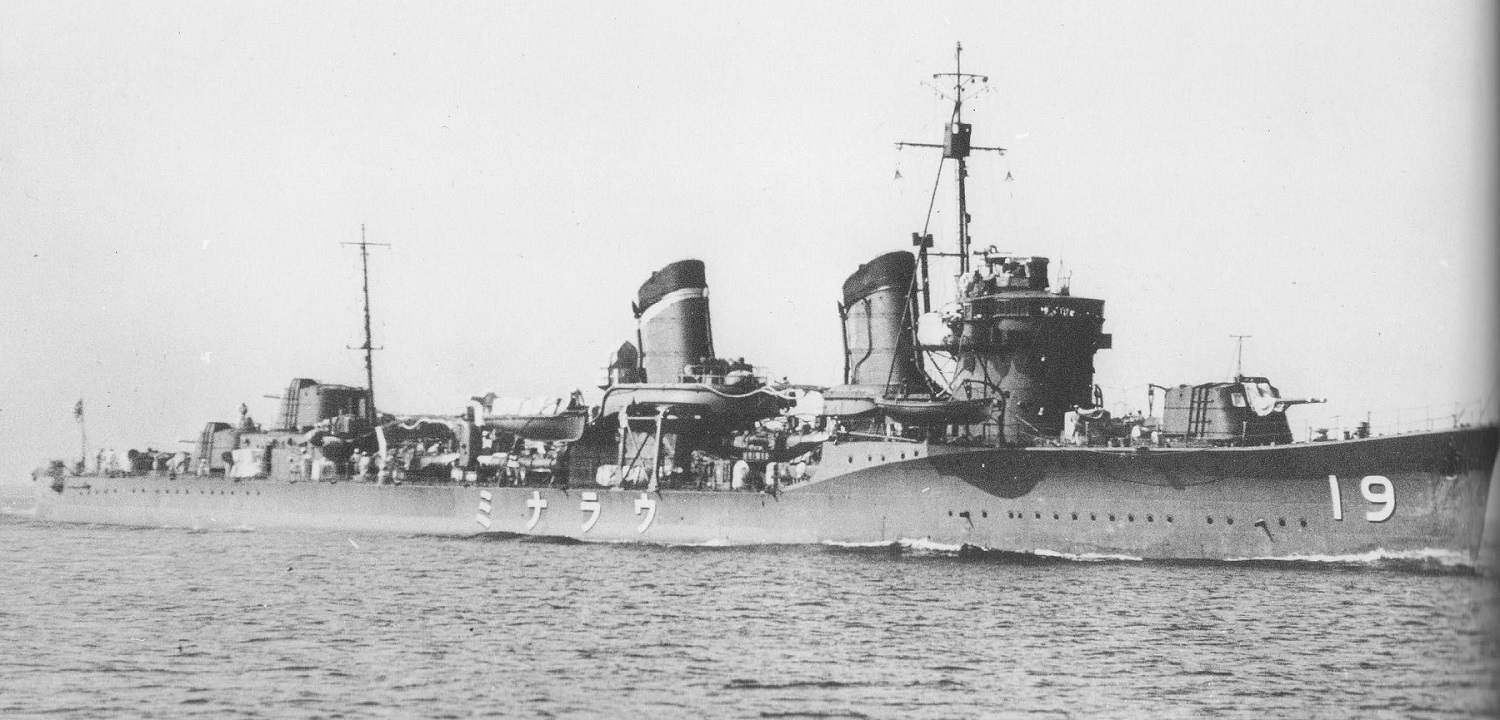
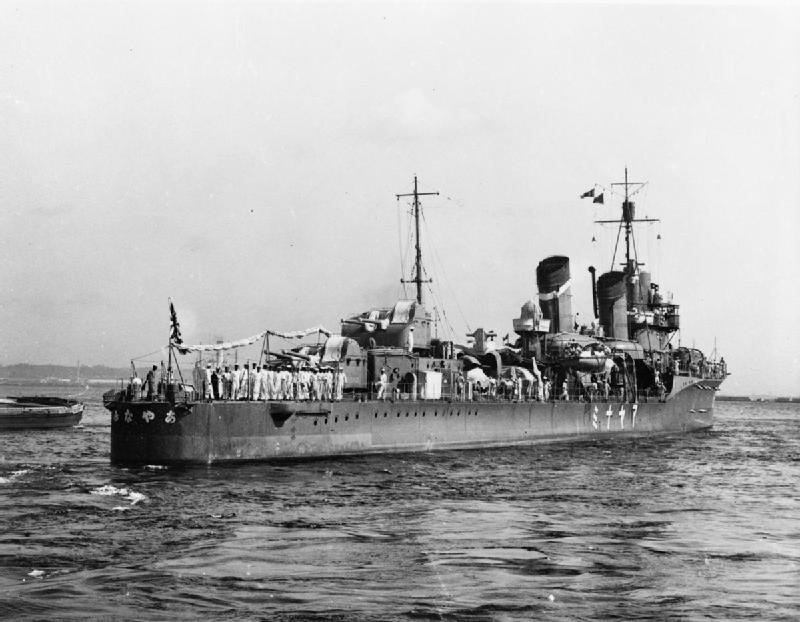
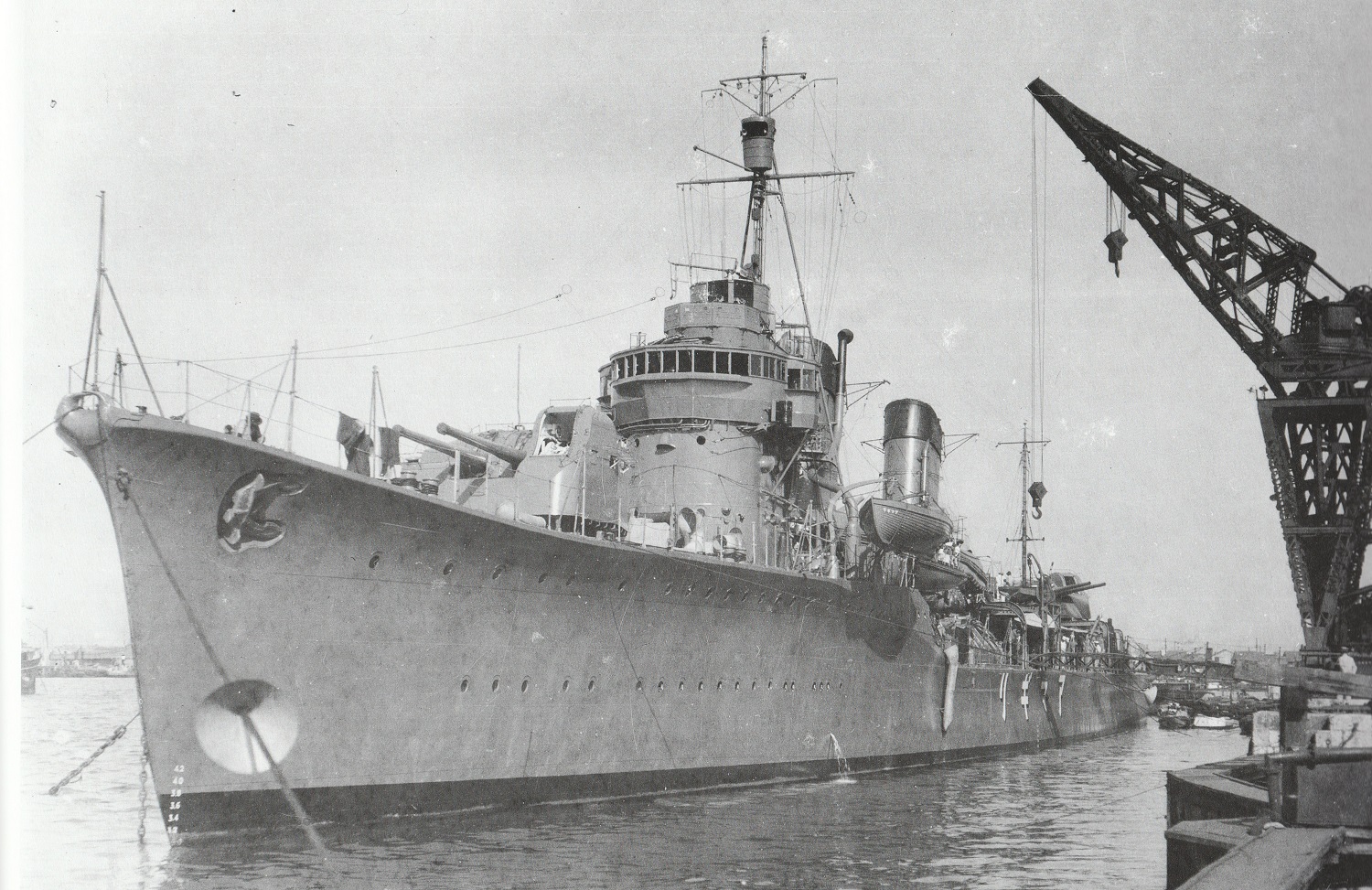
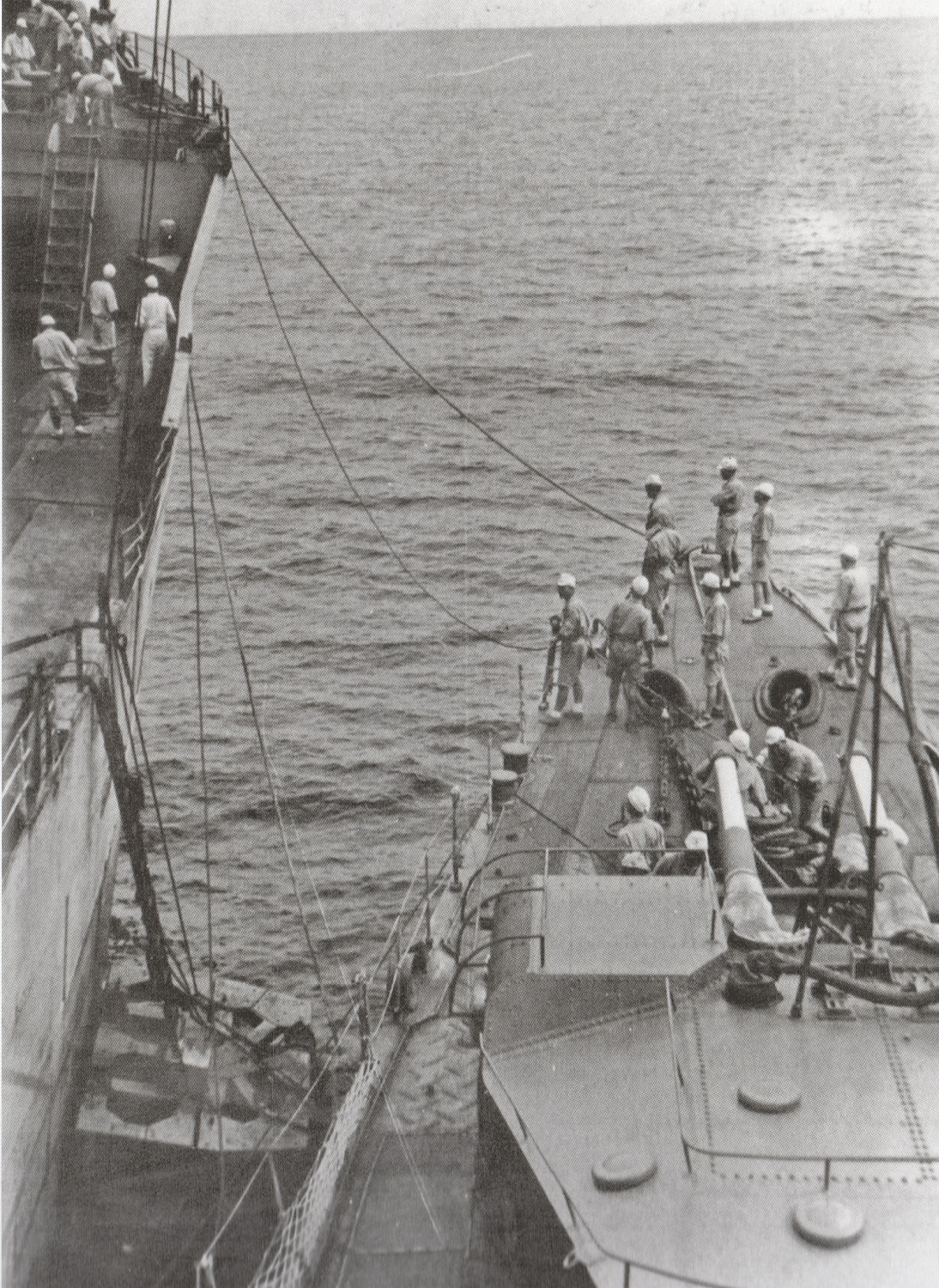
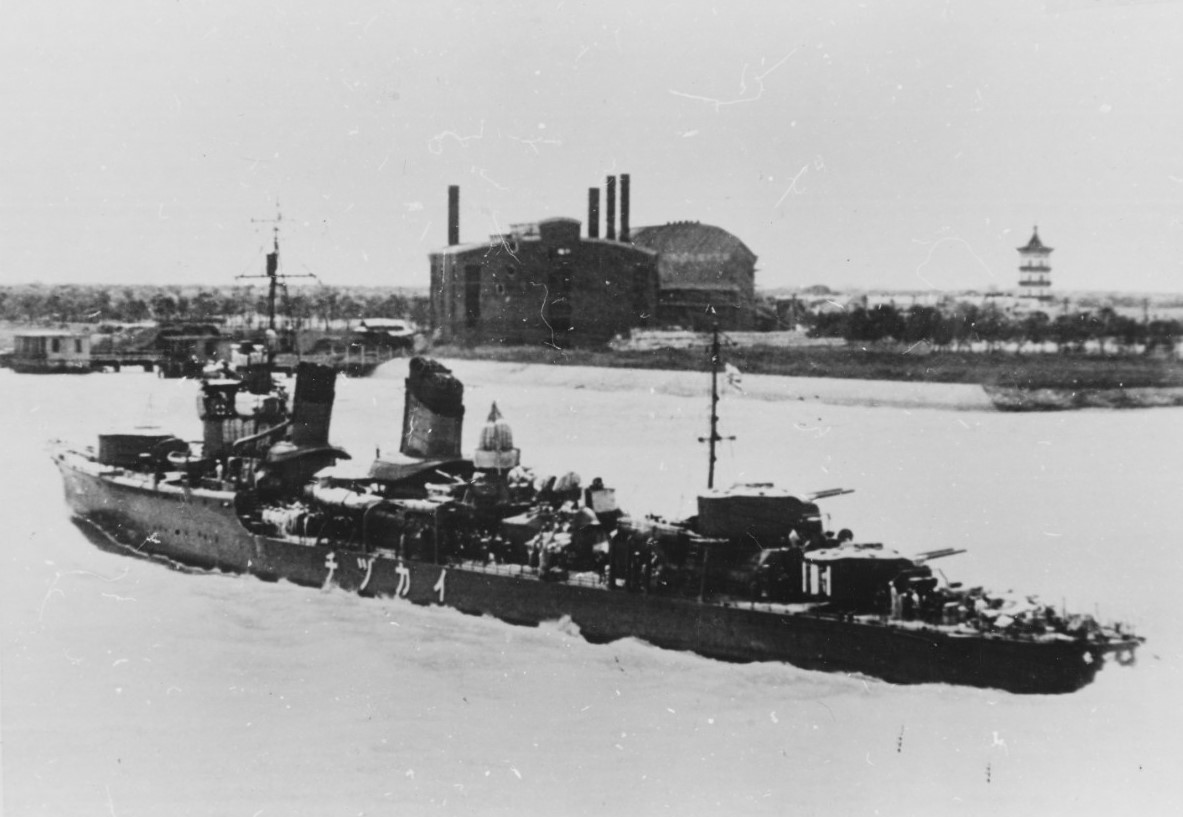
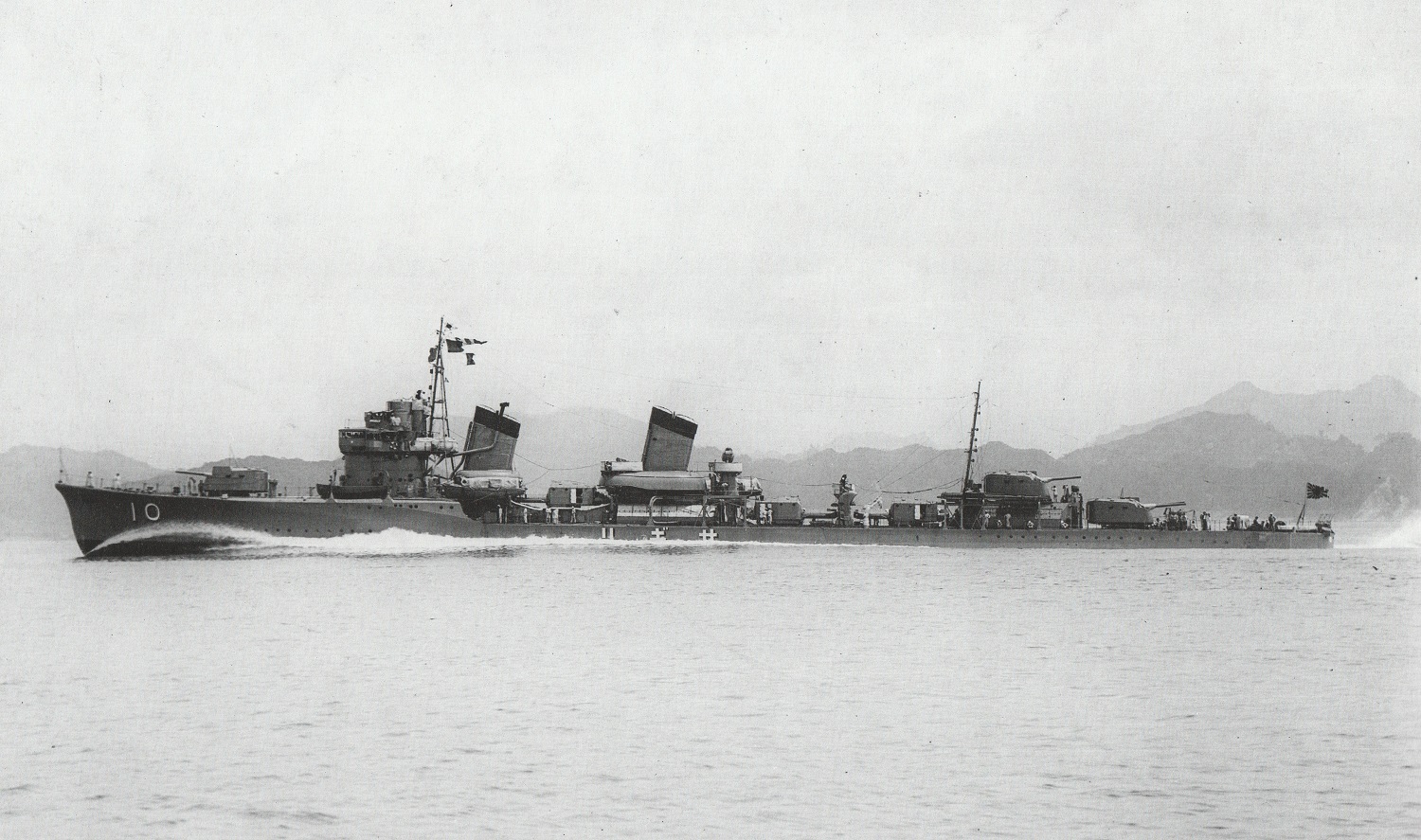
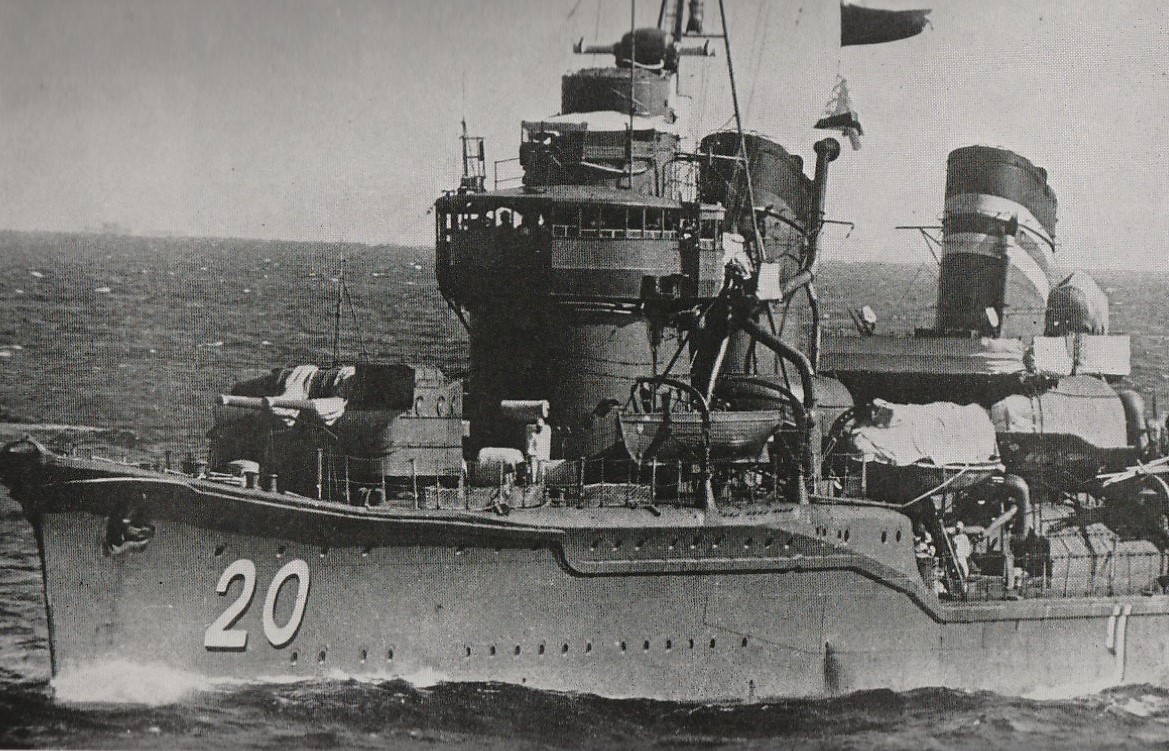
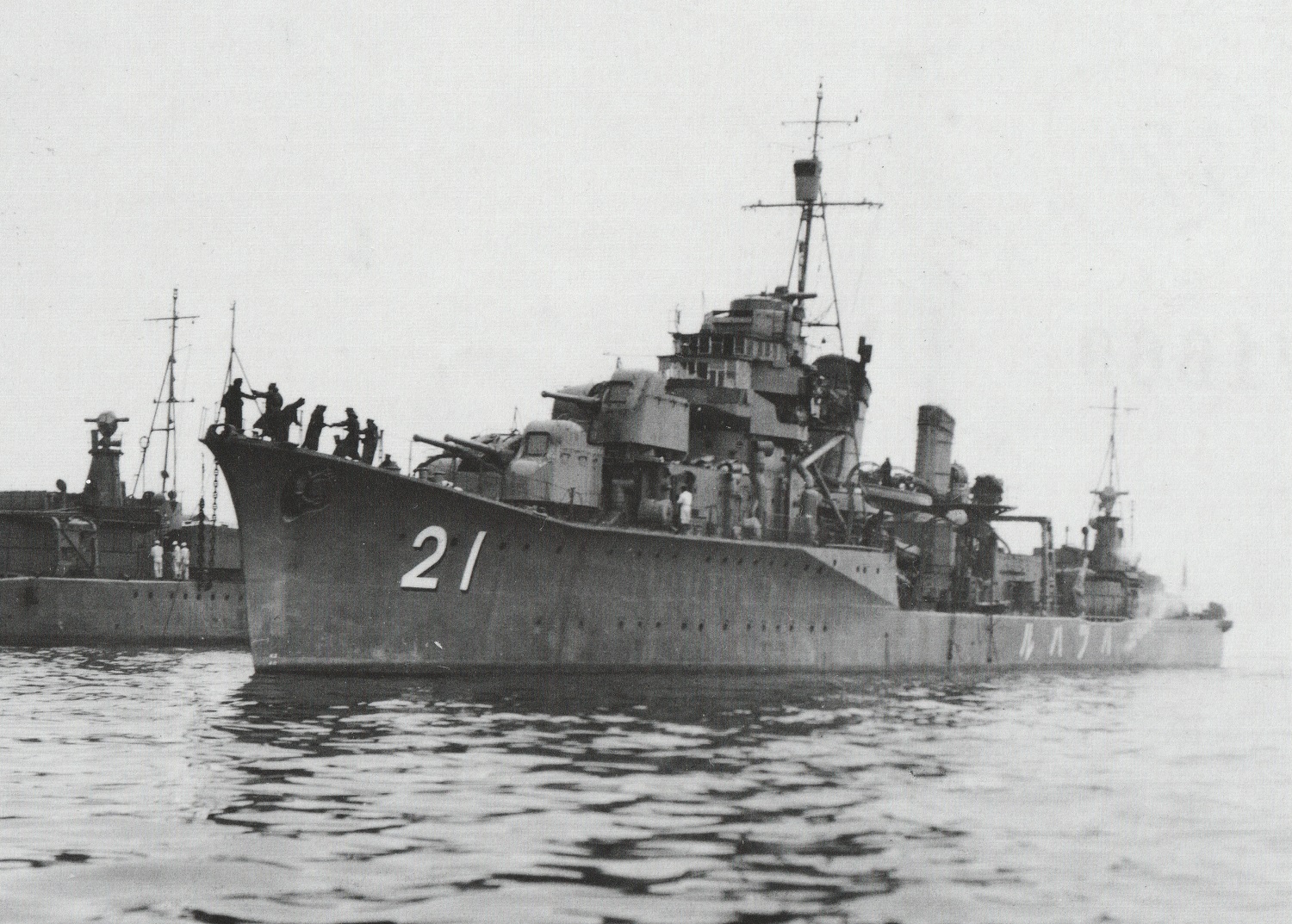
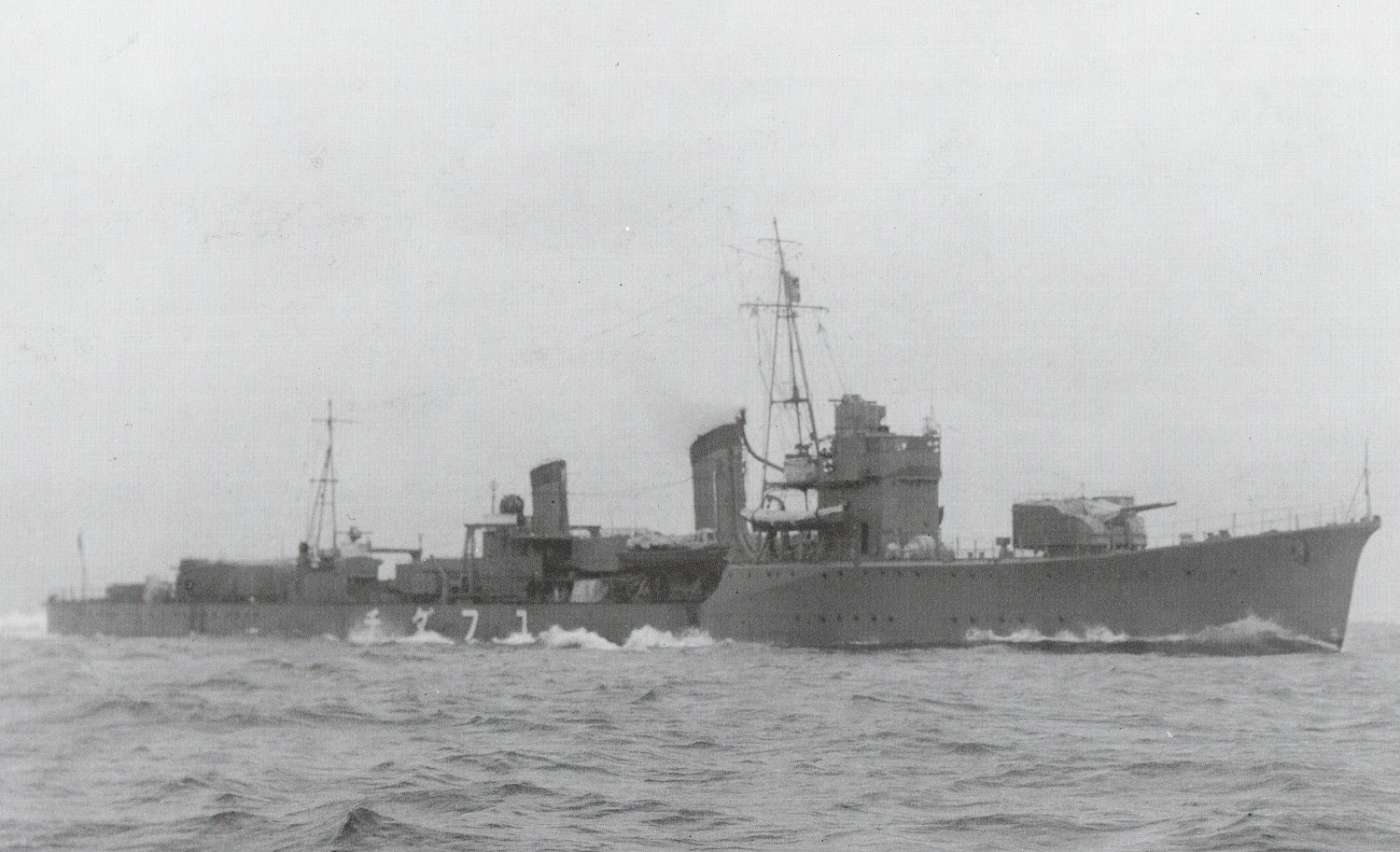
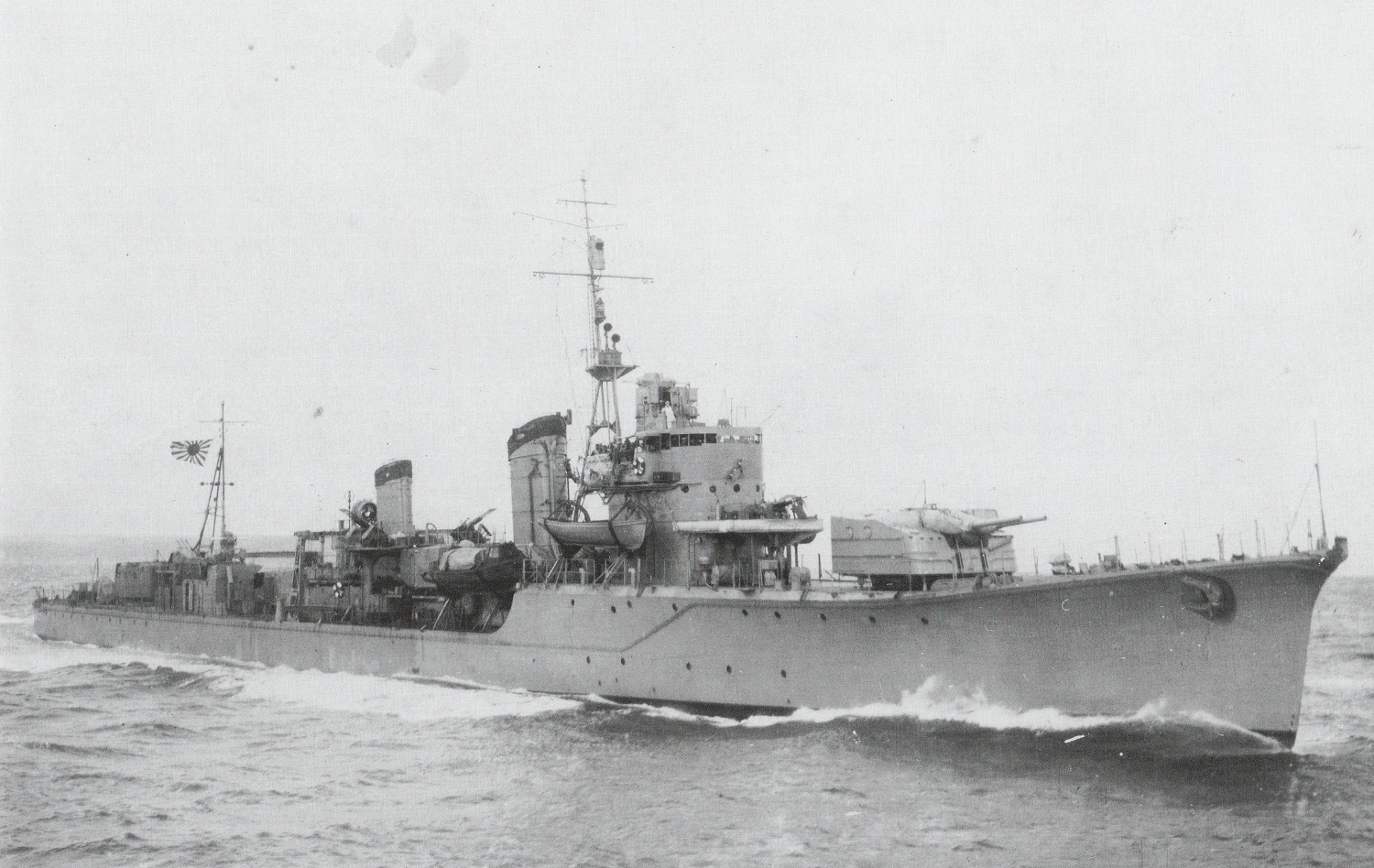
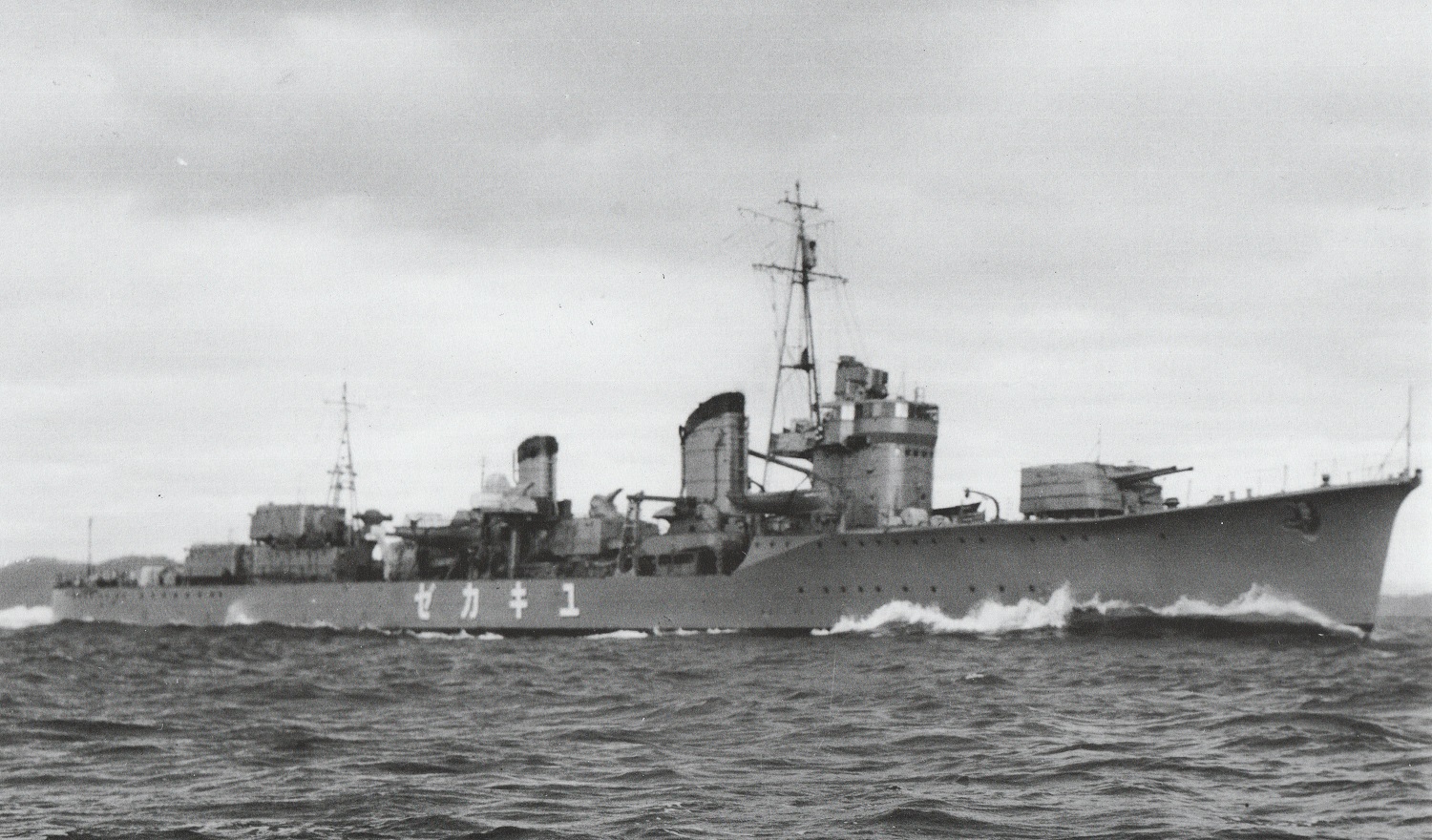
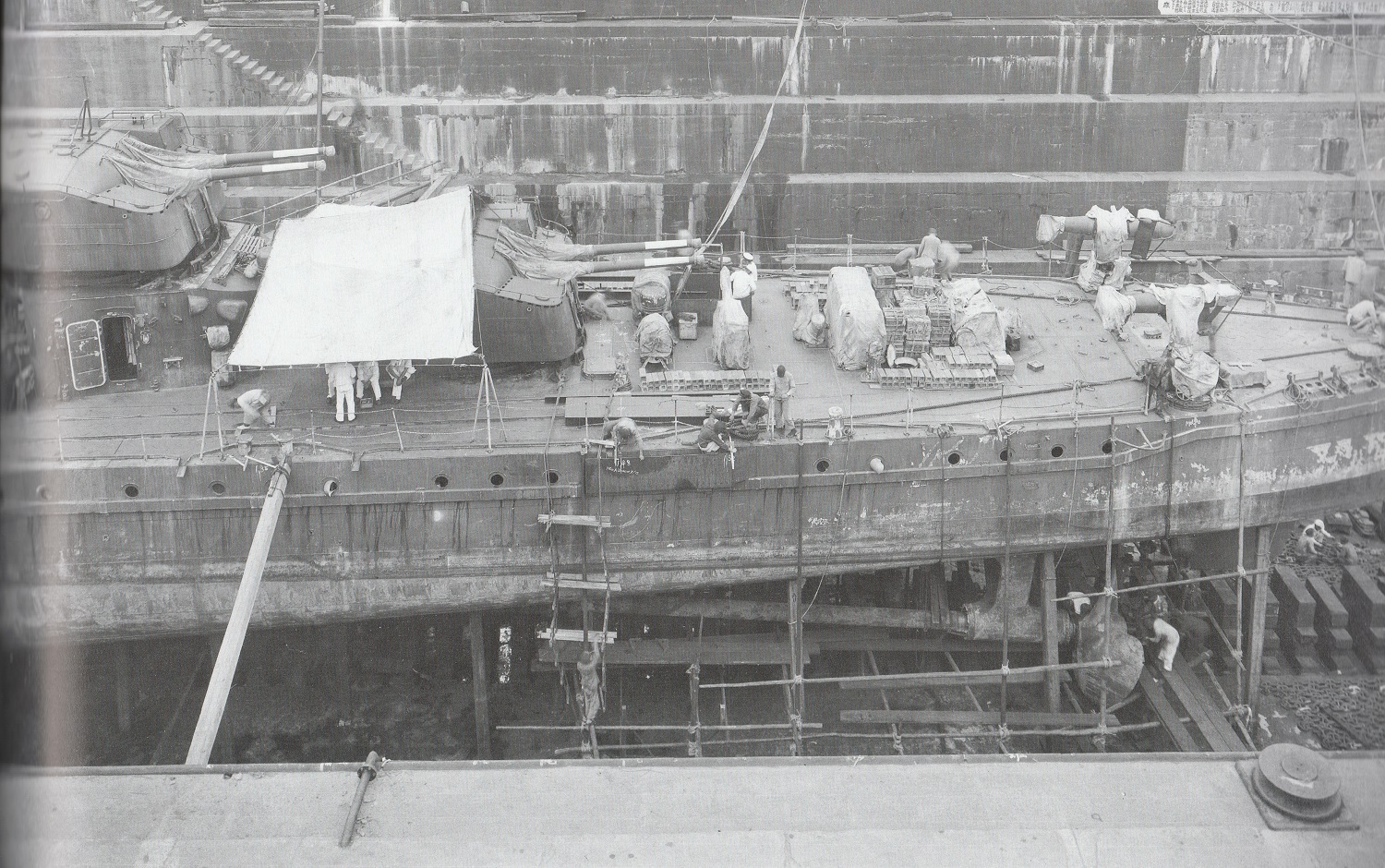
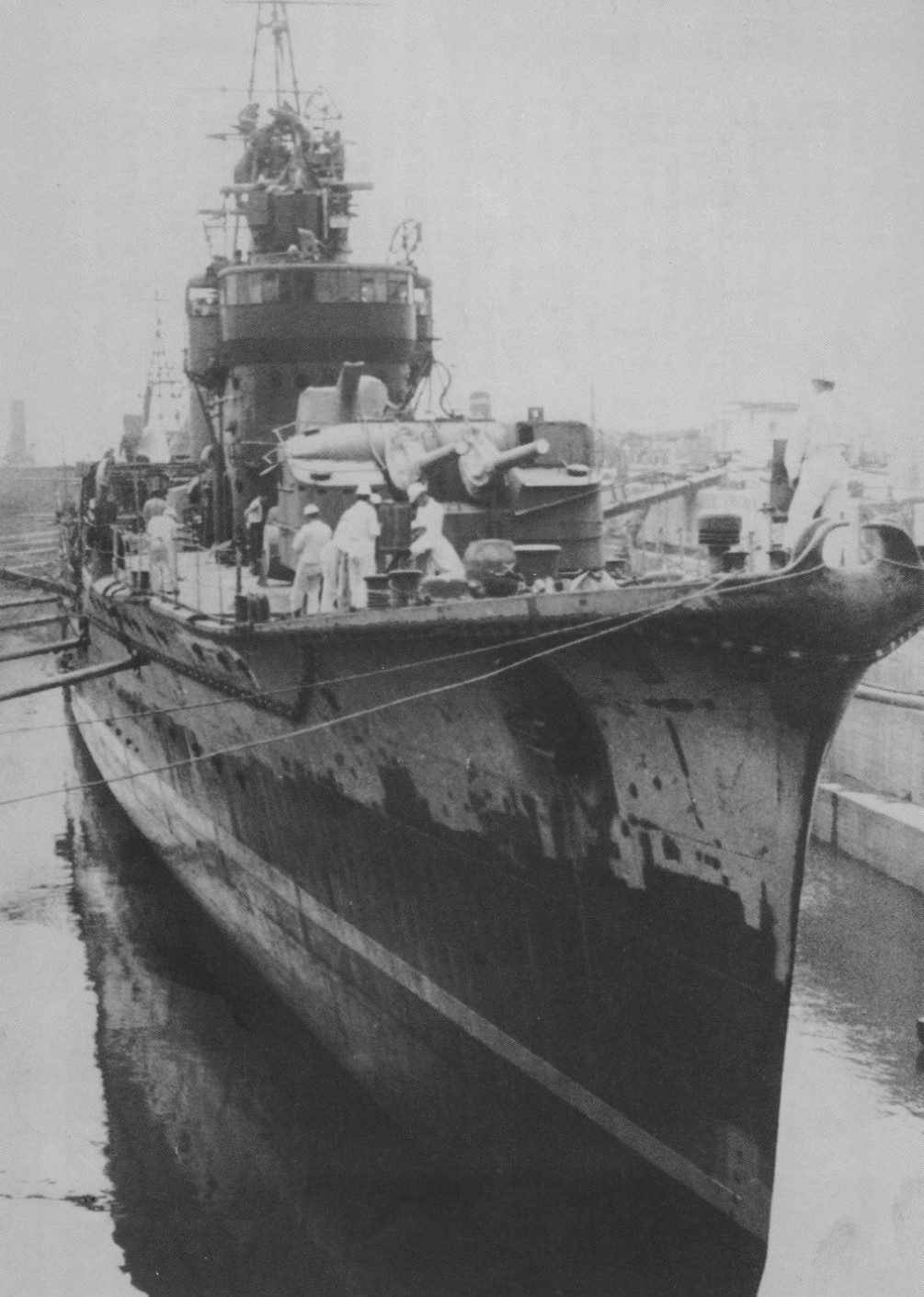
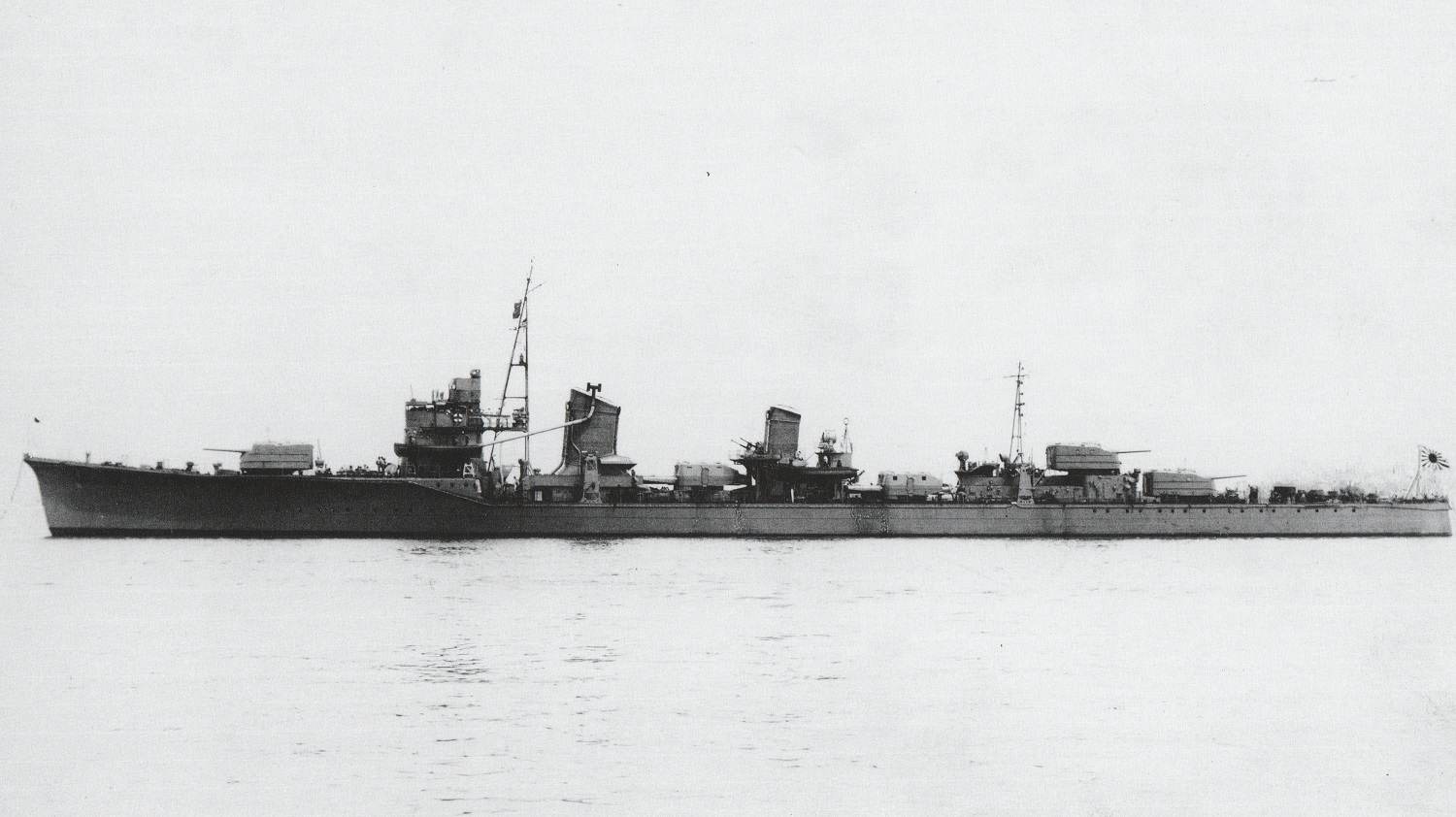
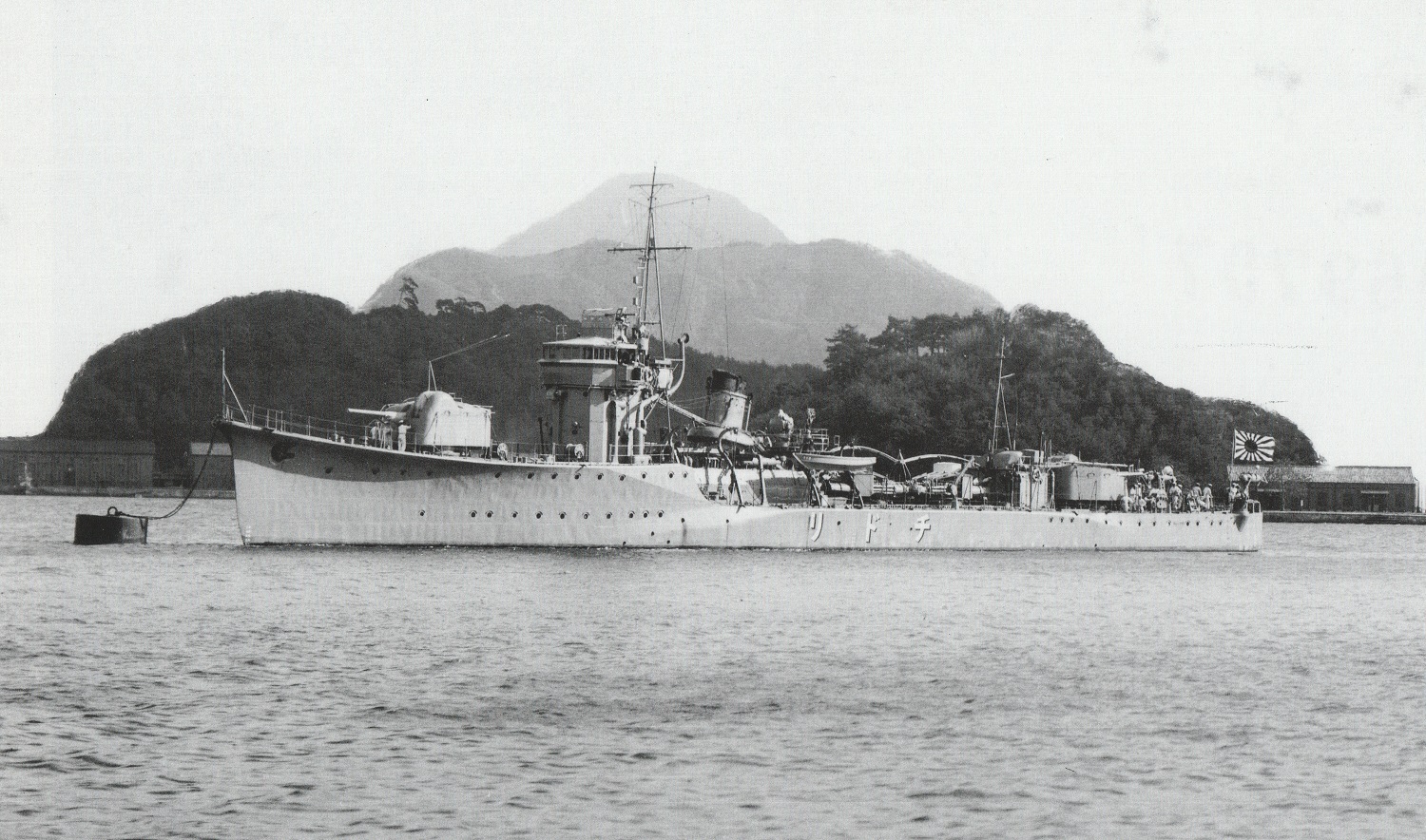
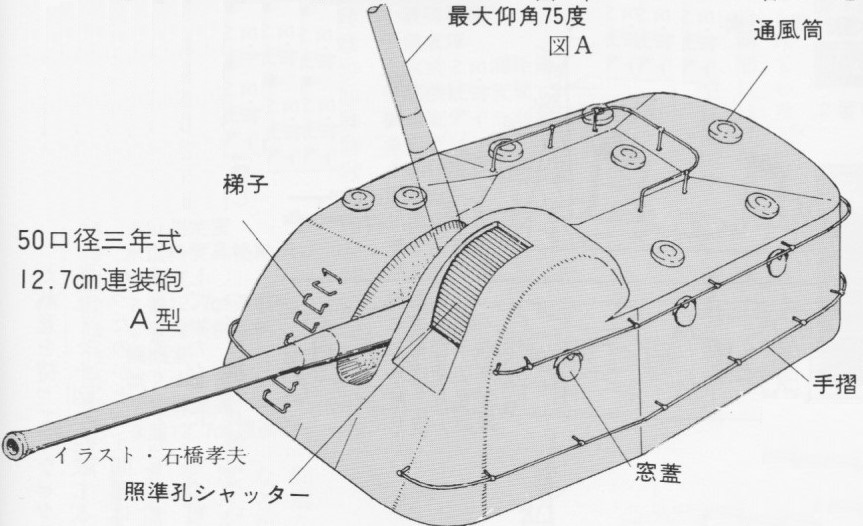
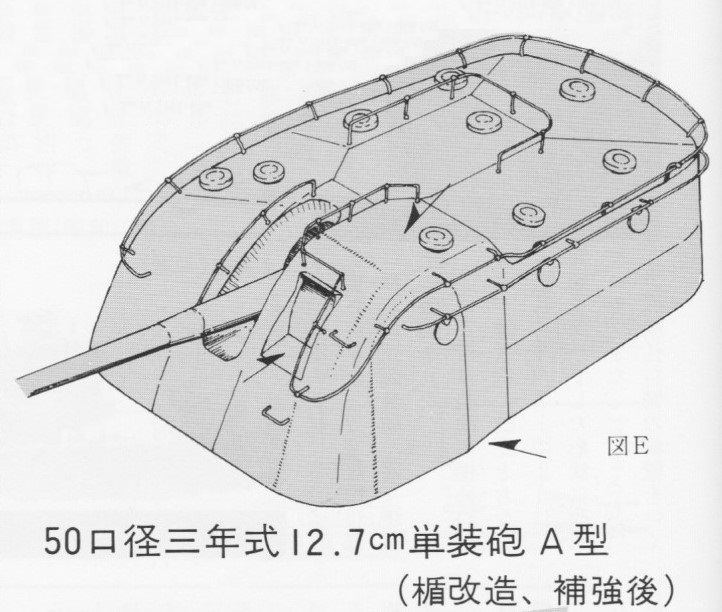
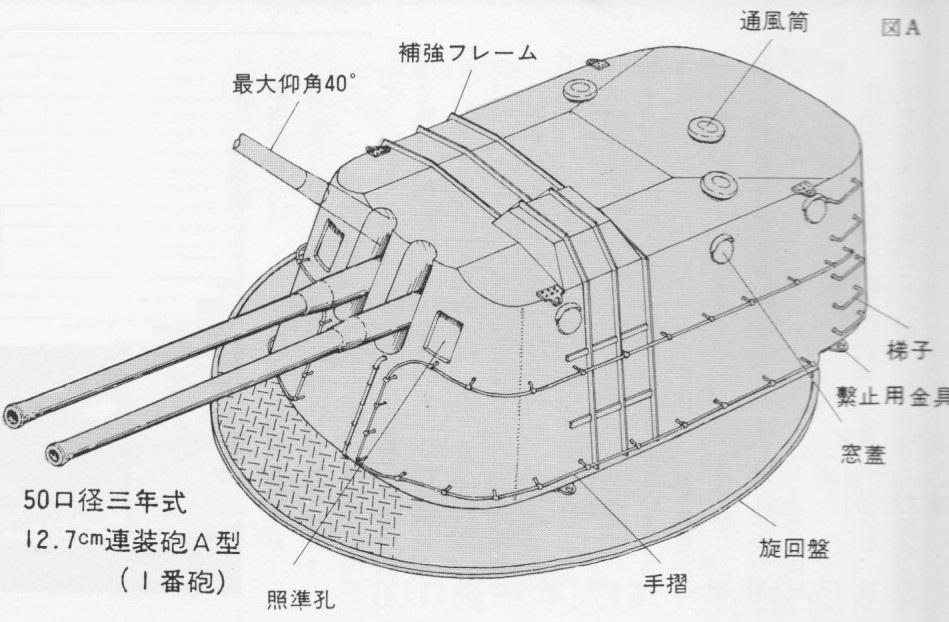
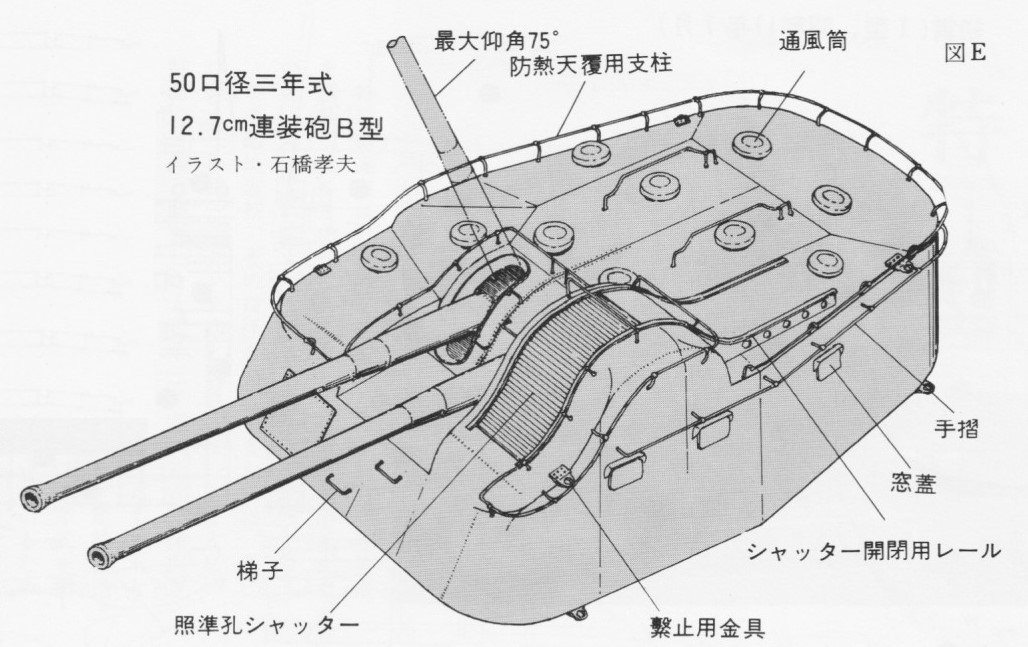
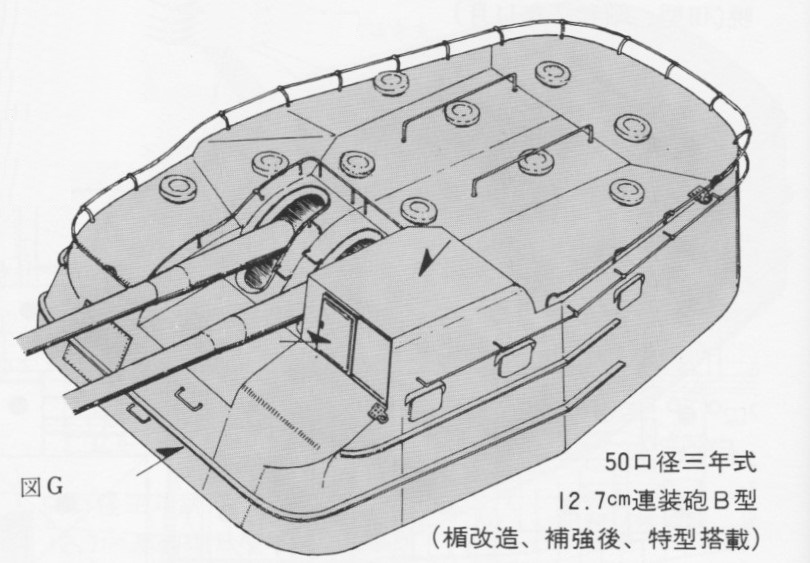
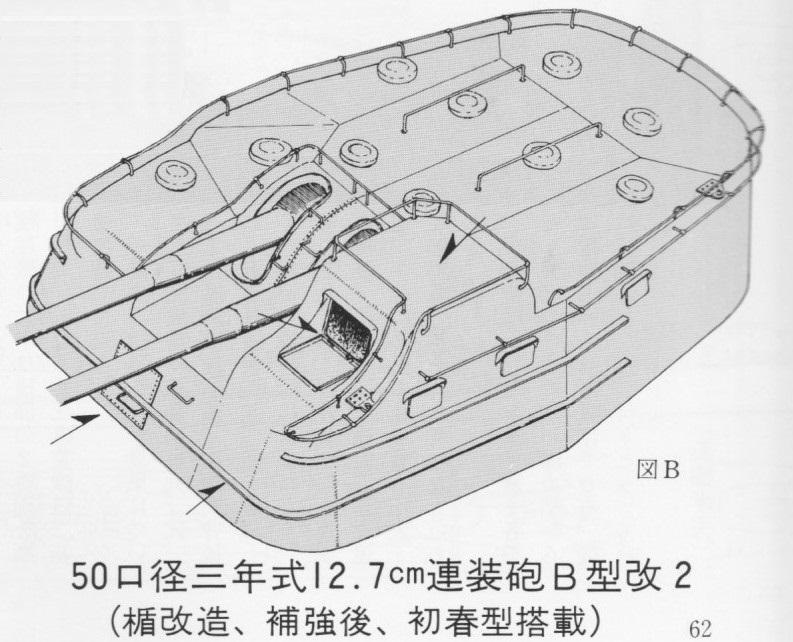
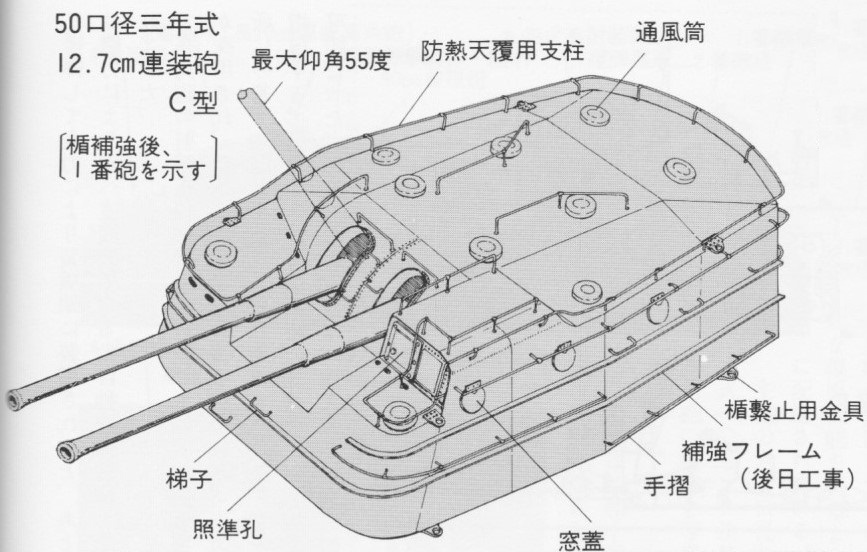
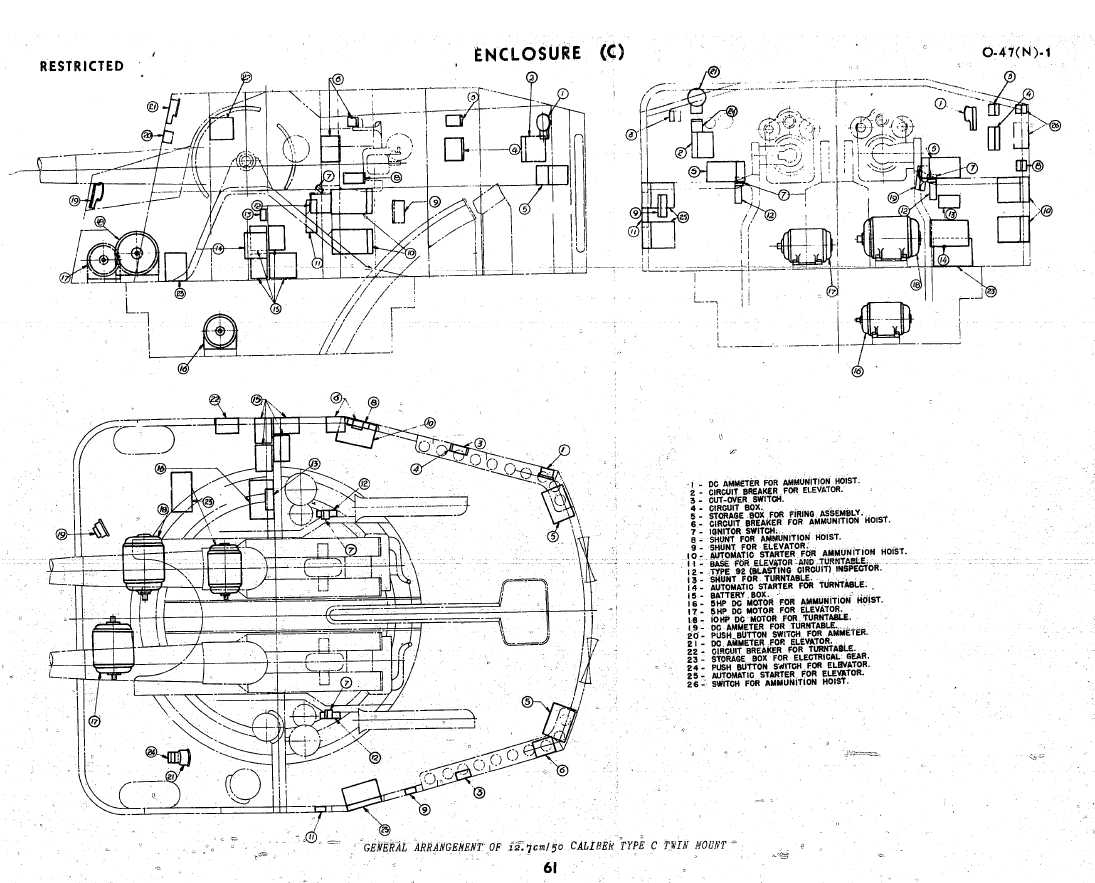
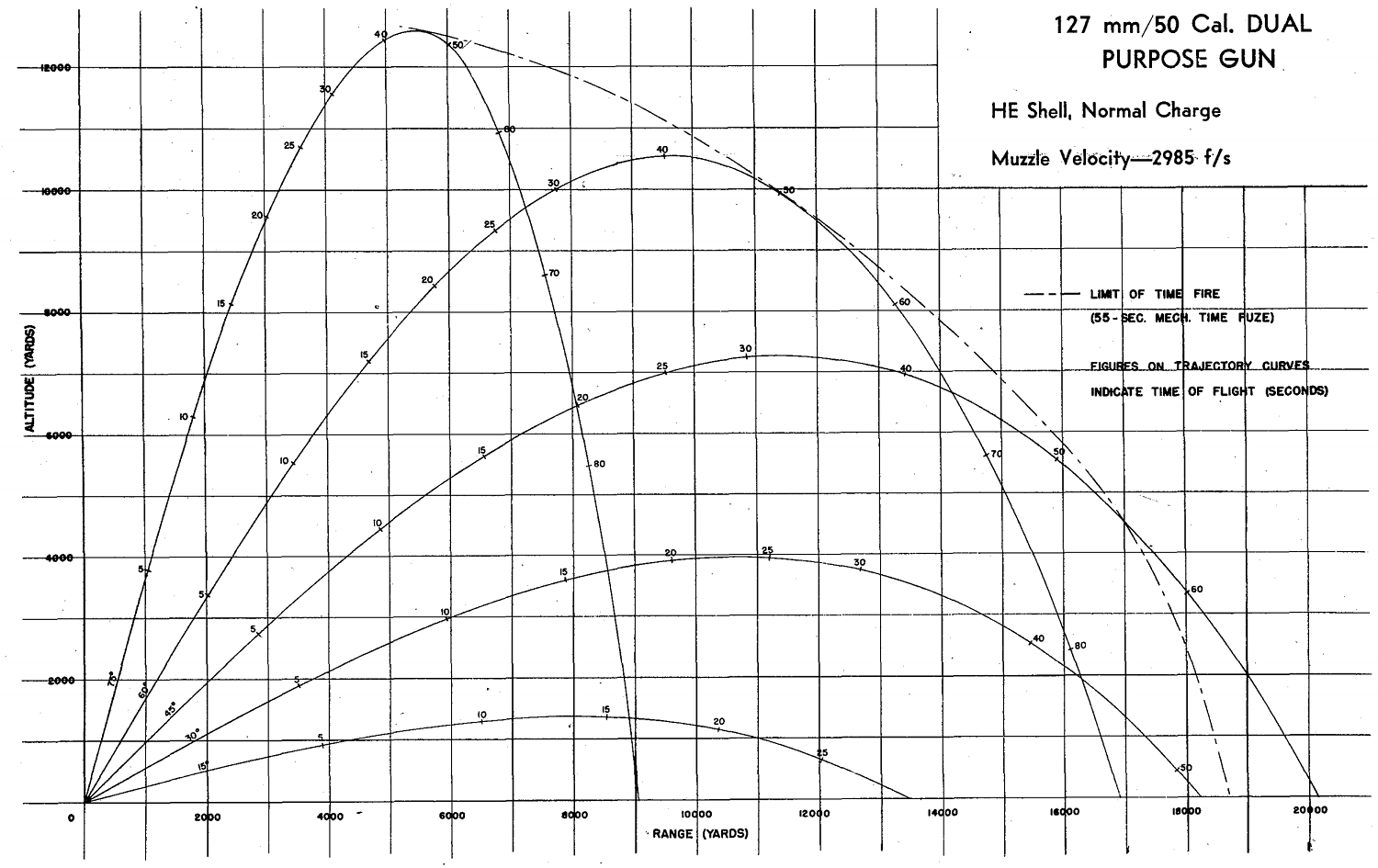
"Naval Weapons of World War Two" by John Campbell
"Mechanism of Japanese Warships - Destroyers" by Maru Special, Kojinsha
"The Japanese Warships of the Pacific War" by The Koku-Fan
"Destroyers: Selected Photos from the Archives of the Kure Maritime Museum - The Best from the
Collection of Shizuo Fukui's Photos of Japanese Warships" by Kure Maritime Museum (Editors) and Kazushige Todaka
"The Japanese Destroyers of the Hatsuharu Class" article in "Warship 2007" by Hans Lengerer
"Fubuki-Class Destroyers: In the Imperial Japanese Navy during World War II" by Hans Lengerer and Lars Ahlberg
"Imperial Japanese Navy Destroyers 1919-45 (1)," "Imperial Japanese Navy Destroyers 1919-45 (2)" and "The Imperial Japanese Navy
in the Pacific War" all by Mark Stille
"Japanese Warships of World War II" by A.J. Watts
"Japanese Super Destroyers" article by A.J. Watts in "Warships Special 2: Super Destroyers" edited by Antony Preston
"Destroyers of World War Two" by M.J. Whitley
---
"Catalog of Enemy Material: 01 March 1945" by Office Chief of Ordnance (US Army)
US Naval Technical Mission to Japan report O-19: Japanese Projectiles General Types
US Naval Technical Mission to Japan report O-47(N)-1: Japanese Naval Guns and Mounts-Article 1, Mounts Under 18"
US Naval Technical Mission to Japan report O-54(N): Japanese Naval Guns
---
Ihao Forum entry for Tan Yang
---
Special help from J. Ed Low
---
Tony DiGiulian's personal files
05 March 2008 - Benchmark
19 March 2009 - Added note regarding the repositioning of the mountings on the Hatsuharu class, more thoughts on the
ROF, fixed typographical error
01 May 2012 - Added picture page
17 December 2013 - Updated photograph of Ayanami
20 December 2015 - Minor additions to photographs
20 March 2019 - Converted to HTML 5 format, reorganized notes, added note regarding time fuzes on Type 1 HE
08 October 2020 - Added mounting mods and notes regarding mods and elevations, added Chidori class, minor changes for clarity,
fixed typographical error, added post-war comments about Yukikaze, added photographs to show mounting designs
31 July 2021 - Added notes regarding mounting shapes, Ayanami sub-class modifications and 'X' mounting on Shimakaze
16 September 2021 - Additional notes on the Type B twin mounting series, added photographs and sketches illustrating mounting Types
18 May 2022 - Added information on ammunition outfits, additional comments on firing rate, more details on mountings, photograph of Ushio
03 January 2023 - Added trajectory chart
28 October 2023 - Added comment on breech mechanism
23 June 2024 - Minor changes for clarity
15 March 2025 - Added to "A Note on Sources" regarding ROF and corrected typographical error
